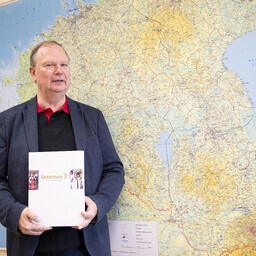The Seto language is special and needs to be preserved. Karl Pajusalu says that the Seto language is very beautiful and creative. Young people, however, rarely use it.
The Seto language is part of the South Estonian language. It is one of the older languages. Karl Pajusalu says that the Seto language helps to better understand other languages.
The Seto people lived separately from other Estonians for a long time. Therefore, their language has preserved many old words and expressions.
The new book 'Setomaa 3' talks about the Seto language and culture. Earlier books discuss the nature and history of Setomaa.
The Seto language is very rich. It has many words and opportunities to create new words. Karl Pajusalu says that the Seto language should remain alive.
According to the latest census, slightly over 20,000 people speak the Seto language. But very few use it daily.
Seto culture is internationally recognized. Seto musicians and artists have performed in many places around the world.
The Seto language is also used in the media, for example in radio programs and films. But this is very rare.
Seto culture is alive and evolving. In recent years, Seto-language plays and books have been created.
The Seto language is unique and requires translation to be understood. This was also seen in a Seto-language performance this summer.
The aim of the Setomaa collected works series is to introduce the Seto language and culture. The book is full of photos and interesting stories.
The creation of the book took years. Many people who are from Setomaa or have visited there helped in its making.
The Seto language and culture are like gems that are valued around the world.

